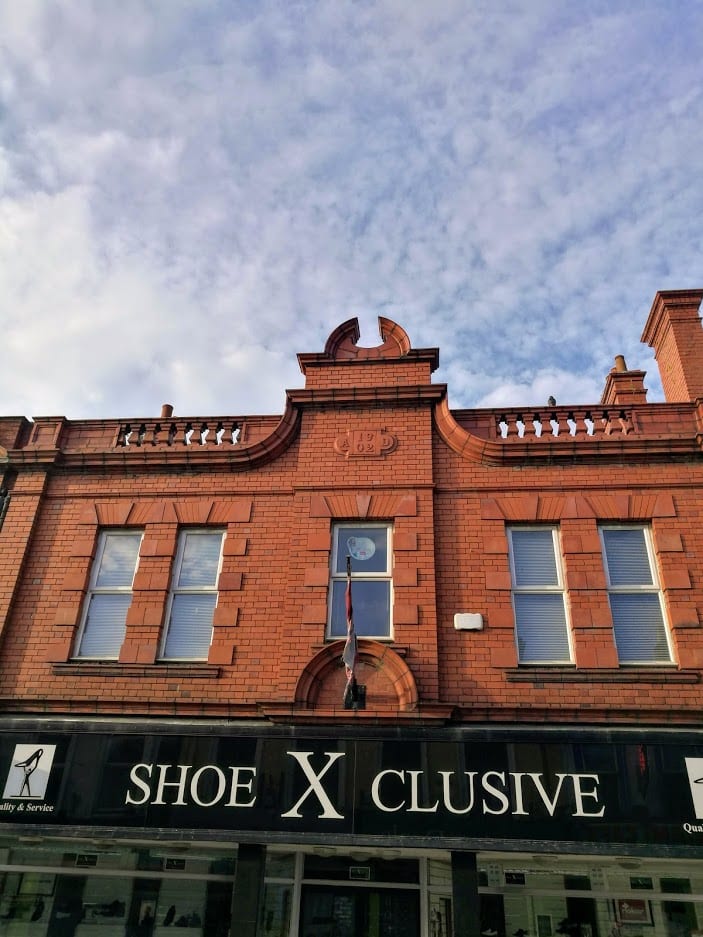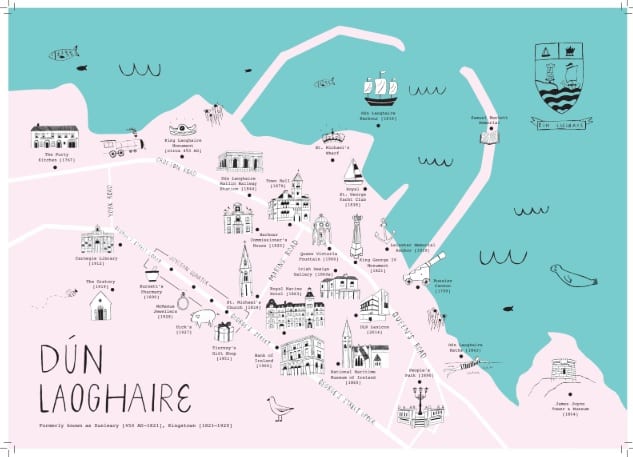James Joyce & Dún Laoghaire Town
James Joyce & Dún Laoghaire Town/Kingstown
Dr. Séamus Cannon
Chairperson Friends of Joyce Tower Society
Joyce claimed that if Dublin were destroyed, it could be re-built from his books. The same could not be said of Dún Laoghaire, but the local references are interesting nonetheless. He was a local resident, we know, in the Sandycove Tower for a very brief time, six nights only in September 1904. It was long enough to make it famous as the most eccentric address in literature as the setting for the opening episode of Ulysses.
After their wedding in 1880 Joyce’s parents John and May lived for a few months in 1881 in 47 Northumberland Avenue. John Joyce became a habitué of Cunniam’s pub in Upper George’s St. where, in the opinion of his biographers, his habit of arriving home drunk became established! They moved to Brighton Square in Rathgar in December of that year where James was born on February 2nd 1882. The family subsequently lived in Blackrock, their final residence in the locality before moving across the city.
James Joyce’s references to Kingstown, as Dún Laoghaire was then known, include the Pavilion and the harbour.
The town was named Kingstown to celebrate the departure of King George IV via the town’s harbour in 1821. In July 1920 ‘Kingstown Urban District Council’ adopted a name change to ‘Dún Laoghaire Urban District Council’.
‘Dear Gogarty, I sent you back the budget. I am still alive. Here is a more reasonable request. I am singing at a garden fête on Friday and if you have a decent suit to spare or a cricket shirt send it on or them. I am trying to get an engagement in the Kingstown Pavilion. Do you know anyone there?’ …
Thus reads a letter from James Joyce (signed Stephen Daedalus) on 3rd June 1904. James Joyce was constantly borrowing from friends and seldom paid them back. At the time, of course, the Pavilion was a vast entertainment palace by the sea, and a popular destination for visitors from Dublin, as indeed it is today. Day trippers took advantage of the railway and trams to promenade, to sail and to swim, and to possibly catch a show in the Pavilion. It was obviously a desireable venue for an accomplished tenor like Joyce, who the same year had won the bronze medal at the Feis Ceoil. He would have won gold had he not refused to take the sight-reading test.
Joyce’s work includes several references to Kingstown Harbour, most notably in Ulysses. Stephen Dedalus was teaching a history class about the Greek king Pyrrhus in the Clifton School in Dalkey:
-You , Armstrong. Do you know anything about Pyrrhus?
The answer from the startled Armstrong, whose thoughts were on the bag of fig rolls in his satchel speaks for generations of schoolchildren:
-Pyrrhus sir? Pyrrhus, a pier. Tell me now, Stephen said, poking the boy’s shoulder with a book, what is a pier?
-A pier, sir, Armstrong said. A thing out in the waves. A kind of bridge. Kingstown pier, sir
… -Kingstown Pier, Stephen said. Yes, a disappointed bridge.
There had been an earlier reference to the harbour and the mailboat when Buck Mulligan was shaving on the roof of the Tower. Joyce makes a hidden reference to the practice of the mailboat blowing its whistle twice as it left the harbour. There is a moment when Mulligan ‘peers sideways up and gave a long low whistle of call, then paused awhile in rapt attention…Two strong shrill whistles answered through the calm’. Mulligan, in anticipating the whistles of the mailboat makes it seem as if they were an answer to his.
In Dubliners, his story After the Race reaches its climax in Kingstown Harbour. Jimmy Doyle, the young Irishman who accompanied the French driver and his friends is the son of a prominent nationalist, ‘who had made his money as a butcher in Kingstown’. The party arrive in Kingstown and board a yacht owned by an American friend, Farley, where they drink and play cards.
-Jimmy understood that the game lay between Routh and Ségouin. What excitement. Jimmy was excited too; he would lose, of course. How much had he written away? The men rose to their feet to play the last tricks, talking and gesticulating. Routh won.
The Englishman and the Frenchman had cleaned out the Irishman! Jimmy’s dawning realization of his disastrous losses are captured in the final words of the story: ‘Daybreak, gentlemen!’
Very early on the morning of September 15 th James Joyce fled the Sandycove Tower in anger and walked to Dublin. A month later he left Ireland for good returning for only three short visits. As he passed by on foot that morning he would presumably not have been in a mood to take in the attractions of Kingstown!
Buildings in Dún Laoghaire Town & James Joyce
Eoin Costello
A number of buildings on George’s Street have beautiful parapets, something that is easily missed as we walk around the town with our eyes focussed on the ground.
Here are some parapets that align with key dates in the life of James Joyce.

88 George's Street Lower - 1898
Parapet stone date states 1898 – Joyce enrolled at the recently established University College Dublin (UCD) in 1898, studying English, French and Italian.

90 Lower Georges Street - 1902
Parapet stone date states 1902 – in this year Joyce graduates from UCD and leaves for Paris via Dun Laoghaire harbour.

68 George's Street Lower - 1903
Parapet stone date states 1903 – Joyce arrived back in Ireland from Paris on 12th April 1903.

91 George's Street Lower - 1904
Parapet stone date states 1904 – In June 1904 Joyce met Nora Barnacle, the Galway woman who was to become his wife and be the inspiration for Ulysses.

69 Lower Georges Street - 1913
Parapet stone date states 1913 – Joyce was completing “A Portrait of the Artist as a Young Man” this year which Egoist started serialising in 1914.

64 Convent Road - 1923
Parapet stone date states 1923 – Finnegans Wake, Joyce’s final work, was created over a period of sixteen years with composition starting in 1923.
Don’t forget our historic walking tour
All the locations mentioned above are included in our historic walking tour of Dún Laoghaire Town.






